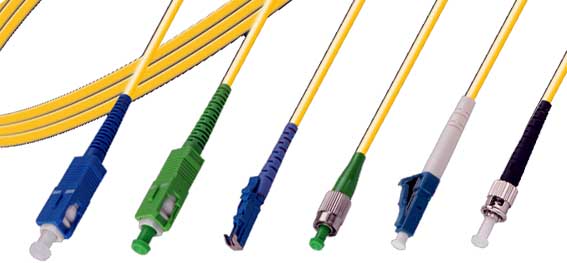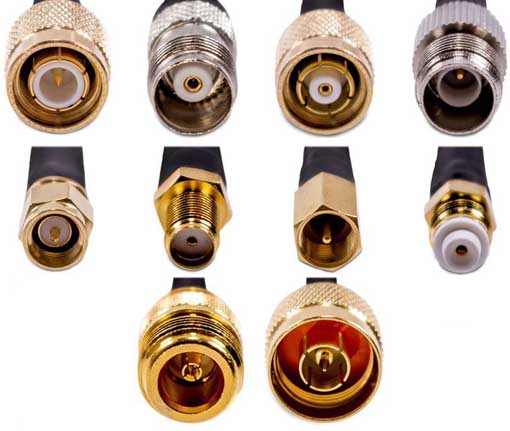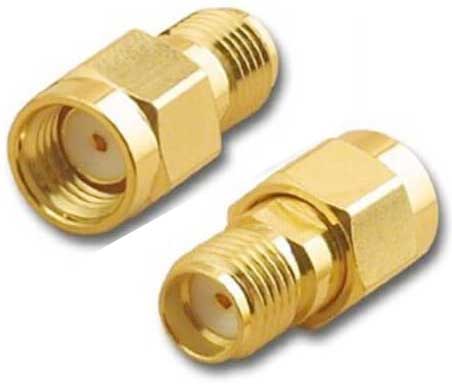Detailed introduction and differences between RF connectors and fiber optic connectors

Connectors are very common in life, but everyone does not know much about some connectors. In order to enhance everyone's understanding of connectors, this article will introduce connectors based on three aspects:
1. Radio frequency connector.
2. How to use optical fiber quick connector.
3. The difference between LC uniboot connector and LC fiber optic connector. If you are interested in the content of this article, you may wish to continue reading.
1. RF connector
The naming method of radio frequency coaxial connector:
The model of the radio frequency coaxial connector is composed of two parts: the main name code and the structure code, separated by a dash "-" in the middle. The radio frequency connector adopts the internationally universal main designation code, and the naming of different structures of specific products is specified by the detailed specification. The structure code is the structure of the radio frequency connector.

(1) Selection of RF connectors
1. The selected RF connector must conform to the actual frequency range.
2. Under normal circumstances, the electrical performance of the straight RF connector is better than that of the bent type, and it can be selected according to the actual use.
3. The selected RF connector should have a smaller standing wave ratio.
4. The selected RF connector should have a smaller insertion loss.
5. The selected RF connector should match the impedance of the mated RF connector or cable.
6. The EMC of the threaded RF connector is better than any bayonet, push-pull RF connector.
7. When there is an IM requirement, the material and plating of the RF connector should be considered.
8. When general-purpose RF connectors meet the requirements, high-performance RF connectors are not used.

(2) Precautions for selection
1, cost performance
2, inventory and procurement cycle
3. Testability, reliability, easy replacement, etc.
4. How high frequency signal the connector runs. When customizing the pin distribution, consider the signal integrity and pay attention to the distribution of signal and ground pins
5. How much voltage and current the connector takes, consider power decoupling and thermal design tolerance, etc.
6. The number of contacts of the connector. Under normal circumstances, follow the principle of fewer connectors and more contacts
7, the installation method of the connector, the matters needing attention when installing
8. Are there any precautions for the specific buckling method of the connector? For example, whether it is necessary to ensure that there are no too high devices in a certain area around the connector to avoid device interference
9. Do you need to consider EMC issues?
2. How to use optical fiber quick connector
The optical fiber quick connector is also called a union, which can be used to connect the continuous optical path formed by two optical fibers. The device can be reused many times and is faster and more convenient to use. According to the structure, there are two types: mechanical connection type and hot melt type; The mechanical connection type includes two categories: embedded type and straight-through type. Different types of optical fiber quick connectors have different materials, performance, low stability, service life and cost.
So how to use the specific optical fiber quick connector? The optical fiber quick connector mainly includes three parts: a main body, a shell and a tail cap. Here is a reminder that you should not discard the packaging bag after taking out the above-mentioned objects from the packaging bag. The packaging bag will be used later.
1. Insert the leather fiber optic cable through the tail cap, and use scissors to peel off the outer skin of the leather fiber optic cable by about 5-6 cm. Then cut off the peeled skin and make sure that the skin layers on both sides remain flush. Be careful during the stripping process to prevent damage to the internal optical fiber cable.
2. Put the optical cable in the clamp and keep the edge of the outer skin flush with the scribe line in the clamp, then close the clamp cover. Next, use Miller pliers to close to the edge of the fixture, cut off the exposed coating to expose the optical fiber, and then clean the exposed white optical fiber with alcohol.
3. Use a jig to cut the optical fiber. After cutting, take the optical cable out of the fixture, and compare it with the icon on the product packaging bag.
Then align the fiber with the main body hole and insert it, and stop when the primary reaches the bottom of the main body. At this time, it can be clearly observed that the fiber is bent. Press the white crimping cover on the main body to the bottom, then screw the tail cap onto the main body and then buckle the shell.

three, The difference between LC uniboot connector and LC fiber connector
1. Compact design to meet the needs of high-density applications
LC Uniboot uses a dual-fiber single tube and integrated tail sleeve design to eliminate the need for double-stranded cables. Compared with ordinary LC duplex fiber jumpers, it is more compact and space-saving, reducing the overall bulk wiring by 50%. At the same time, it is conducive to the heat dissipation of the wiring system and more reasonable utilization to achieve greater energy efficiency.
What is fiber polarity? The fiber polarity is the direction in which the optical signal propagates in the fiber. Normally, there are the transmitting signal end (Tx) and the receiving signal end (Rx). The LC Uniboot optical fiber connector innovatively sets the two plugs of the optical fiber connector into a mutually interchangeable design to help users easily reverse the fiber polarity. You can easily open the ferrule and switch the polarity without any tools.
3. With tie rod design
The connector can be unlocked with one hand in a high-density environment, which is simple and convenient. Even in a high-density environment, the push-pull lever can easily insert or pull out the jumper. The half-wrapped end structure can also prevent cables from entanglement.
The innovative LC uniboot optical fiber connector, with its unique structure and compact design. In a high-density wiring environment, it performs better than conventional LC dual-core connectors, and is an ideal choice for data centers and FTTX.





